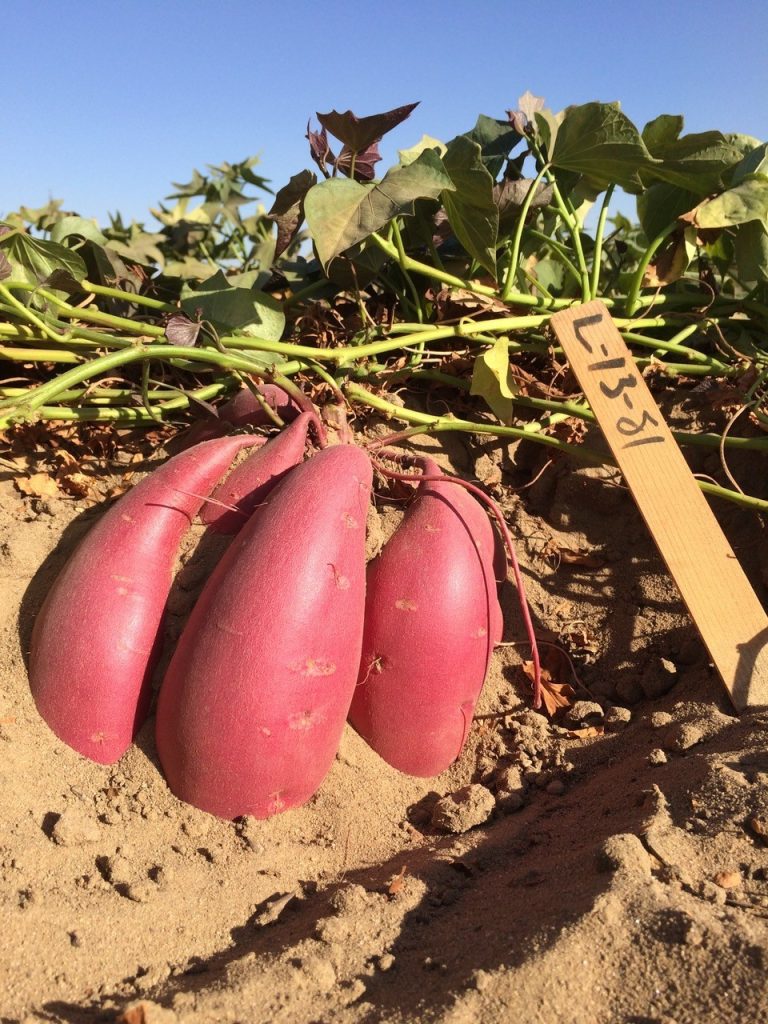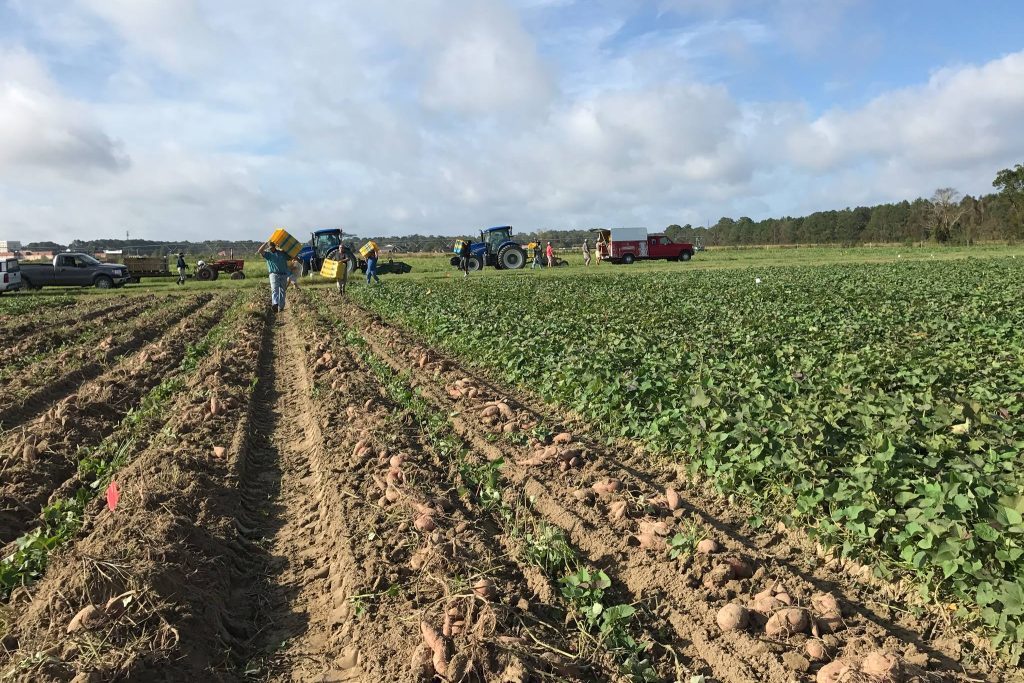Vegetables and Pulses
Sweetpotato ‘Tinian’ – Fusarium Wilt Resistance
RESISTANCE TO FUSARIUM WILT SAVED THE U.S. SWEETPOTATO INDUSTRY
Don LaBonte and Imana Power
LSU AgCenter, Louisiana State University, 101 Efferson Hall, Baton Rouge, Louisiana 70803.
Corresponding authors: dlabonte@agcenter.lsu.edu
OUTLINE
1. SUMMARY

Fusarium wilt (Fusarium oxysporum f. sp. batatas) is a devastating disease in sweetpotato (Ipomoea batatas (L.) Lam. var. batatas) that was once considered production limiting. After ‘Tinian’, unadapted sweetpotato germplasm maintained by the U.S. National Plant Germplasm System (NPGS), was found to be resistant to this disease, breeders used its valuable genetics to develop more resistant varieties. The extent to which this source of resistance has been incorporated into modern commercial varieties is not exactly known but is generally considered to be widespread. Over time, varietal resistance has remained durable and the disease is no longer an issue for U.S. growers.
The goal was to develop resistance to a economically limiting disease on sweetpotato grown in the U.S.
Download a printable fact sheet by clicking the image below.
2. PROBLEMS ADDRESSED

Fungi that cause Fusarium wilt diseases are deadly to a wide variety of crops, including sweetpotato. Susceptibility to Fusarium wilt can result in complete crop loss. This was a reality for much of the history of sweetpotato production in the United States.
3. SOLUTIONS DEVELOPED

In 1946, the sweetpotato accession PI 153655 was donated to the NPGS from the Northern Mariana Islands. This sweetpotato, named ‘Tinian’ after the island where it was growing, possesses resistance to Fusarium wilt (Steinbauer, 1948). Although Tinian is truly unadapted germplasm, it was quickly used in breeding programs to develop commercially viable lines with this source of resistance (Peterson, 1975). The resistance is still effective, and U.S. growers no longer see Fusarium wilt as a major concern in the industry.
The NPGS has made PI 153655 available to researchers and breeders across the nation. The development of new Fusarium wilt resistant varieties has been a large, multi-state effort. This success is thanks to those who accessed this germplasm.
4. IMPACT

With an increasing U.S. consumer demand for sweetpotato, ensuring access to germplasm with natural disease resistance is more important than ever (George et al., 2023). Fusarium wilt resistance has been a boon for sweetpotato production, which in the U.S. alone was worth $676 million in 2023 (NASS, 2024).
5. GERMPLASM

Genebank accession PI 153655 was collected from the Island of Tinian and donated to the NPGS in 1946.
More information can be found at GRIN-Global: PI 153655.
6. REFERENCES
Clark CA, Ferrin DM, Smith TP, Holmes GJ (Eds.) 2013. Compendium of Sweetpotato Diseases, Pests, and Disorders, 2nd ed. American Phytopathological Society, St. Paul, Minnesota.
George J, Reddy GVP, Wadl PA, Rutter W, Culbreath J, Lau PW, Rashid T, Allan MC, Johaningsmeier SD, Nelson AM, Wang ML, Gubba A, Ling K-S, Meng Y, Collins DJ, Ponniah SK, Gowda PH. 2023. Sustainable sweetpotato production in the United States: Current status, challenges, and opportunities. Agronomy Journal 116:630-660. https://doi.org/10.1002/agj2.21539
NASS. 2024. Quick Stats. USDA National Agriculture Statistics Service. Accessed 11 March, 2024. Available from: https://quickstats.nass.usda.gov/results/D745EABC-3BDC-34E5-AA63-54EB519FBB5B
Peterson CE. 1975. Plant Introductions in the Improvement of Vegetable Cultivars. HortScience 10:575-579. https://doi.org/10.21273/HORTSCI.10.6.575
Steinbauer CE. 1948. A Sweetpotato from Tinian Island highly resistant to Fusarium wilt. Proceedings of the American Society for Horticultural Science 52:304-306.
7. CHAPTER INFORMATION
Citation: LaBonte D, Power I. 2024. Sweetpotato ‘Tinian’ – Fusarium Wilt Resistance. In: Volk GM, Chen K, Byrne P (Eds.) Plant Genetic Resources: Success Stories. Fort Collins, Colorado: Colorado State University. Date accessed. Available from https://colostate.pressbooks.pub/pgrsuccessstories/chapter/sweetpotato-tinian-fusarium-wilt-resistance/
Content originally submitted: October 23, 2023
Date of publication: April 2, 2024
USDA is an equal opportunity provider, employer, and lender. Mention of trade names or commercial products in this article is solely for the purpose of providing specific information and does not imply recommendation or endorsement by the U.S. Department of Agriculture.


